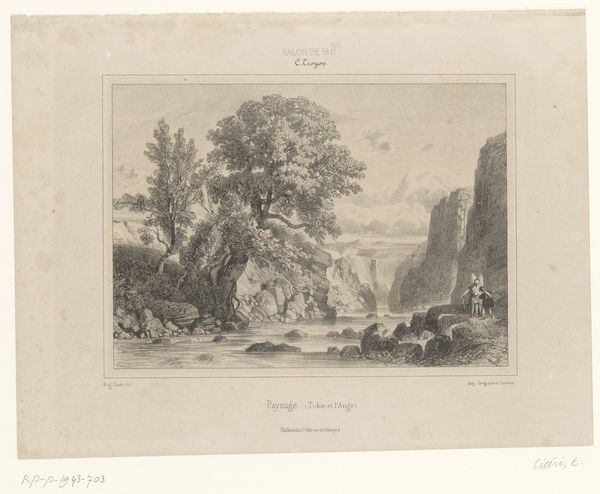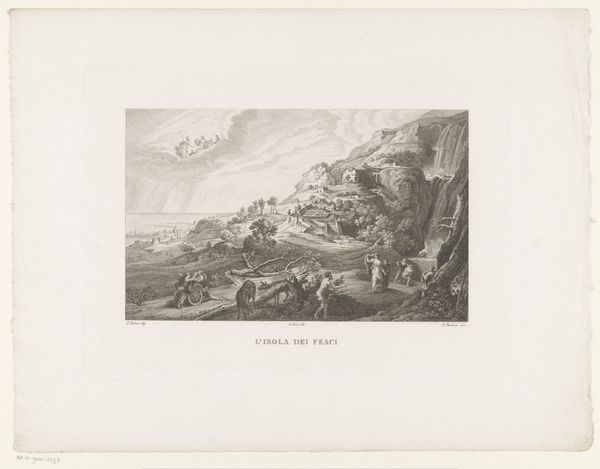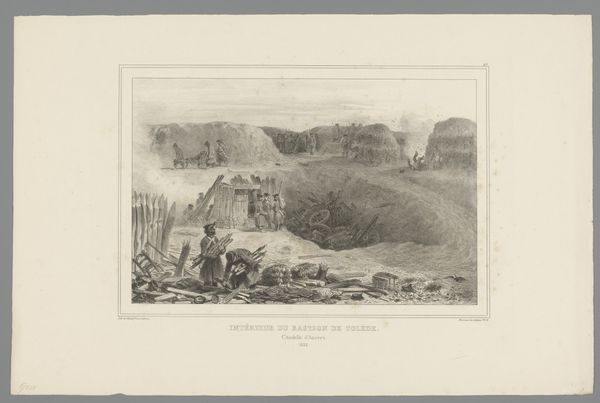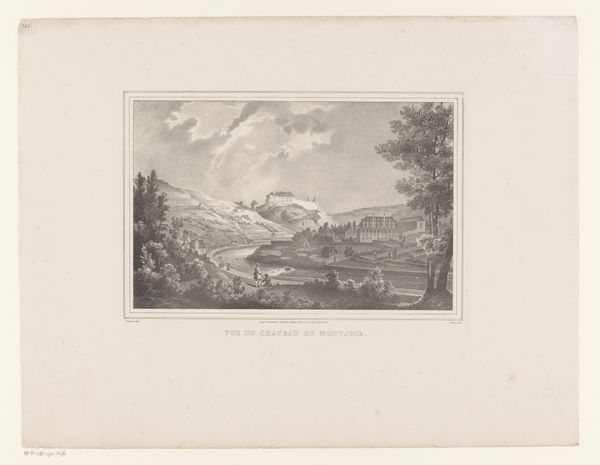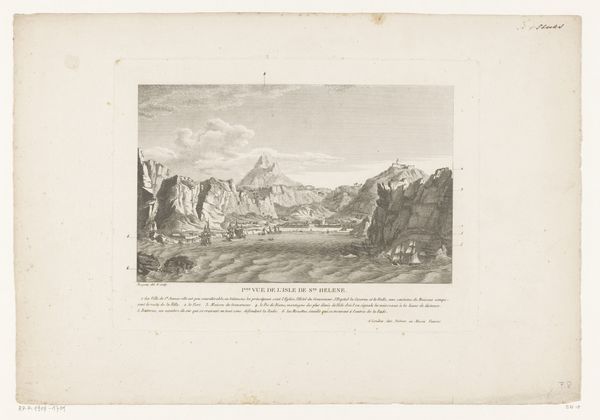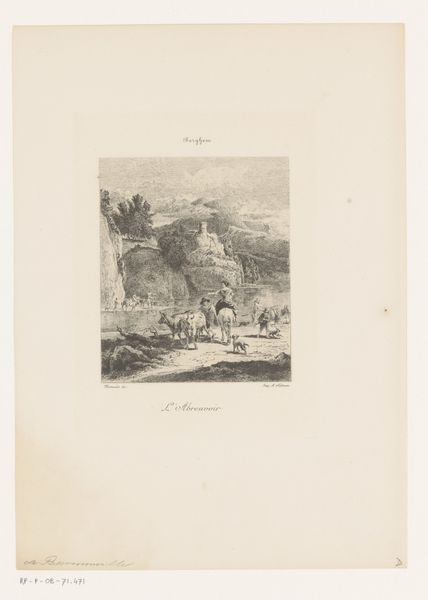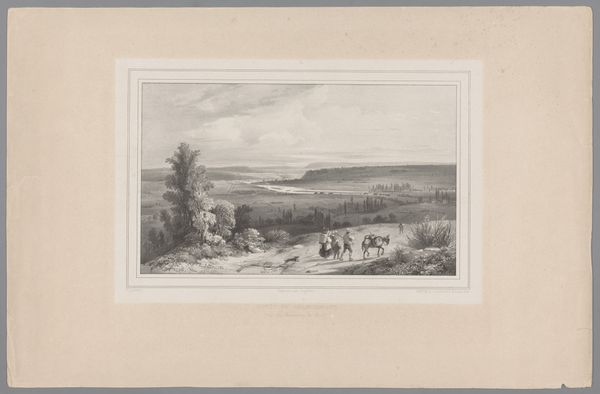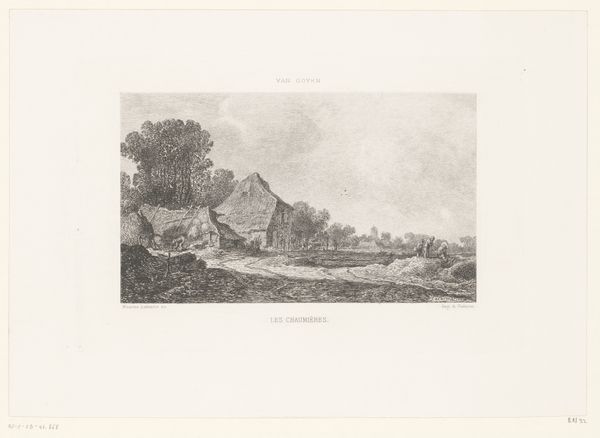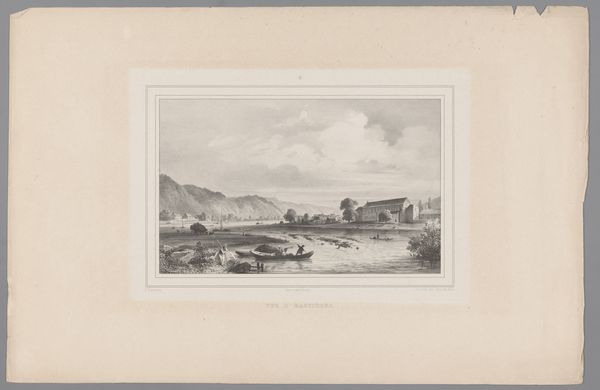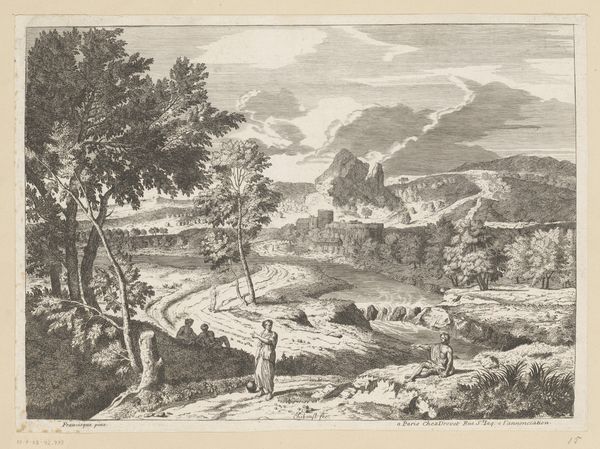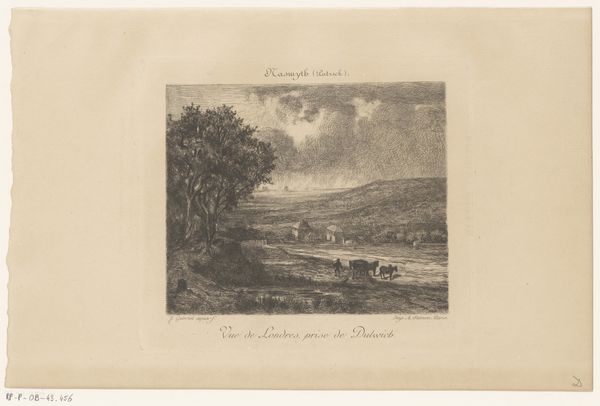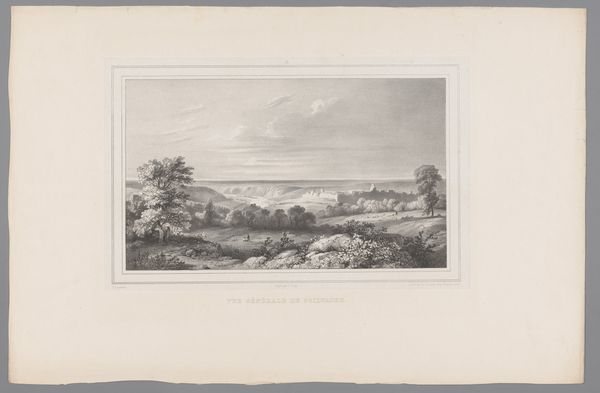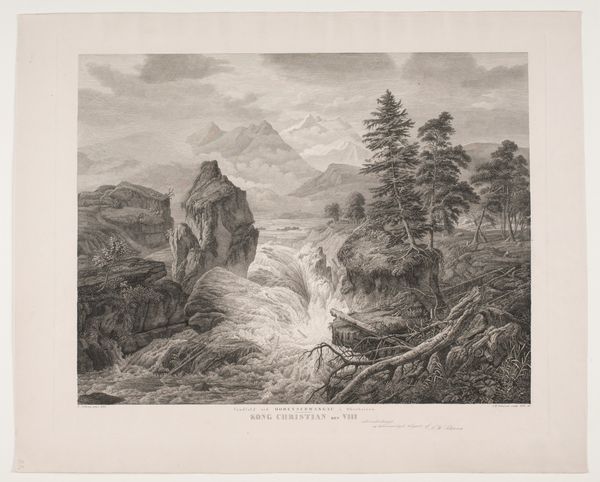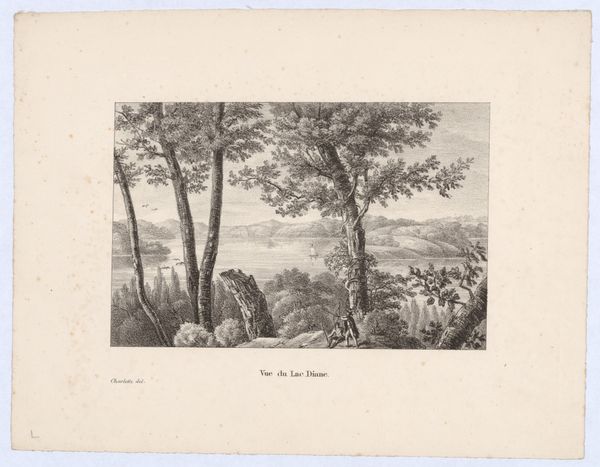
print, engraving
# print
#
landscape
#
romanticism
#
engraving
#
watercolor
Dimensions: height 229 mm, width 298 mm
Copyright: Rijks Museum: Open Domain
Curator: Today, we’re observing Henri-Charles-Antoine Baron's "Italian Landscape with a Mountain Stream," an engraving from 1841. Editor: The scene definitely evokes a sense of tranquility. The scale is vast yet rendered with such delicate detail that you can almost feel the spray of that waterfall. There is something almost cinematic to this imagined scene of Italy. Curator: Indeed, Romanticism highly valued dramatic natural settings. Notice how Baron used the engraving technique, creating depth and texture with cross-hatching and fine lines? The labor involved must have been immense to produce this subtle tonality and suggest various textures, from foliage to rock. Editor: And that tonality contributes directly to its symbolism. The mountain stream could be seen as representing the relentless power of nature, slowly shaping the earth itself, even as the human figures trudge through their day-to-day life at the foreground. What burdens are they carrying? Curator: Consider the implications of printmaking in that period. This artwork wouldn't exist as a singular masterpiece but could be reproduced and disseminated. We see the artist engaging with Romantic notions of landscape but doing so within the means of fairly early mass production. The potential for widespread consumption shifts how we understand the artist's labor and its value. Editor: It definitely pulls you in. I feel the timelessness of the mountains meeting the small dramas of people’s lives. It speaks to the human spirit's persistence in the face of grandeur. What does "Italia" evoke for a French audience at that time? An escape from growing industrialization, a link back to some ancient past? Curator: These prints often played with the same cultural symbols in Romantic landscape paintings. As such, the cultural work that printmaking contributes to the original imagery it depicts should be investigated in more detail. What is this print referencing and how might it differ or align with a cultural memory? Editor: Seeing how the landscape serves as both stage and mirror, the artwork is still intensely evocative. A sense of the personal journey within a vast world. Curator: Precisely. By tracing the physical process, its reproductive possibilities, and engagement with cultural icons of its time, the artwork presents a compelling case study of nineteenth-century materiality.
Comments
No comments
Be the first to comment and join the conversation on the ultimate creative platform.
